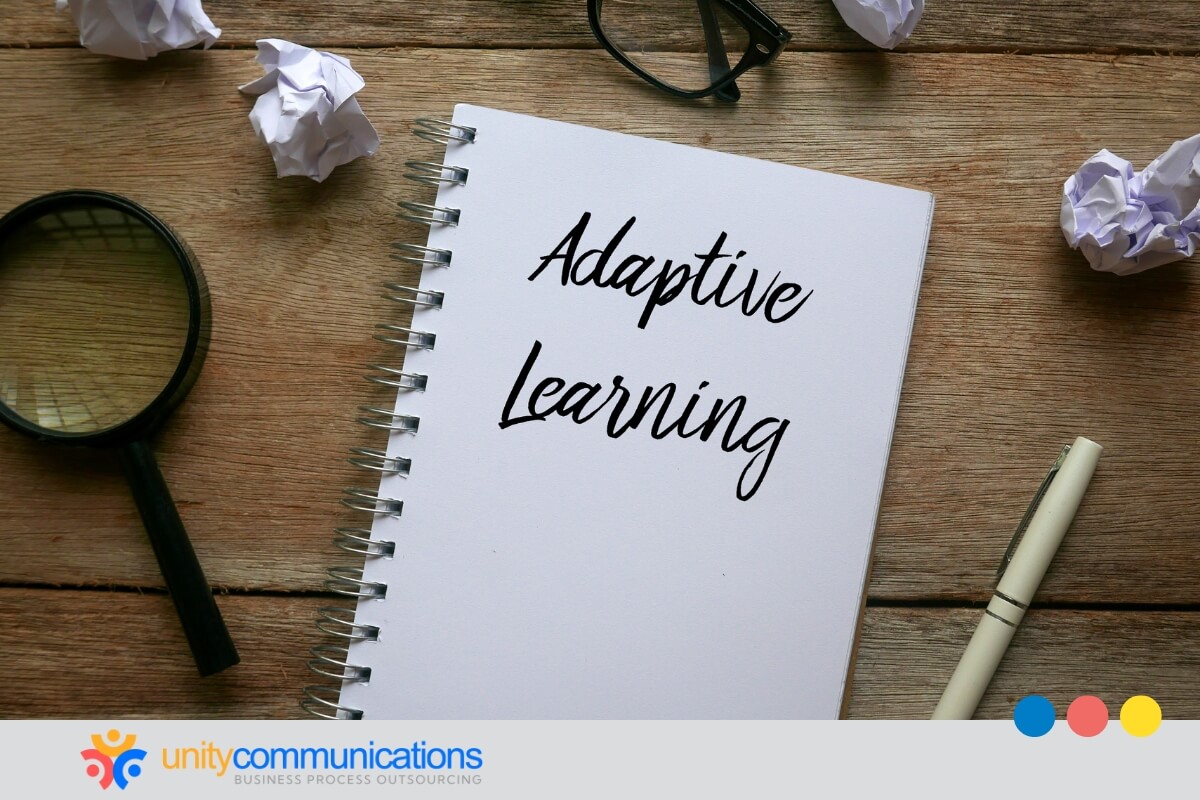Table of Contents
You might not realize it, but reinforcement learning (RL) in AI agents uses the same principle that teaches a dog new tricks. Except it now powers machines to think, adapt, and improve.
Instead of relying on static rules, these AI agents learn through trial and error, refining their actions based on the feedback they receive. The more they operate, the more intelligent and efficient they become. This opens the door for your business to AI that does more than just follow instructions but evolves to handle challenges independently.
This article examines how RL can enhance your operations by transforming everyday processes into self-optimizing systems.
Understanding reinforcement learning in AI agents

Reinforcement learning in AI agents is a machine learning (ML) approach where agents learn by interacting with their environment, making decisions, and receiving feedback. Unlike static systems, these agents continually improve over time through trial and error, making them more adaptive and intelligent.
In industries such as business process outsourcing (BPO), this adaptability helps streamline operations and deliver more innovative and responsive solutions.
- Adaptive learning. Agents continually refine their actions based on feedback, resulting in improved performance.
- Autonomous decision-making. Agents to operate with minimal human intervention, saving time and resources.
- Scalability. AI solutions handle increasing workloads without losing efficiency.
- Improved accuracy. Trial-and-error learning reduces mistakes and optimizes processes.
- Versatility across industries. You can customize these agents to work across various functions and sectors, such as customer service, logistics, and finance.
According to McKinsey’s State of AI report, 78% of organizations use AI in at least one business function. This widespread adoption highlights the growing impact of advanced techniques such as RL. With it, AI agents become smarter, faster, and more effective the longer they operate.
Core components of reinforcement learning
To understand RL, you must look at its core building blocks, each working together to shape how an AI agent learns. Much like how outsourcing works, success depends on clear roles, defined environments, and measurable outcomes.
In reinforcement learning, these components guide the agent’s growth and adaptability:
Agents
In RL, the agent is the decision-maker. The AI system takes actions within an environment. Think of it as the “employee” in the outsourcing analogy, responsible for performing tasks and improving with experience.
An agent’s primary goal is to maximize rewards by choosing the best possible actions over time. Its intelligence comes from continuous feedback and learning cycles.
Environments
The environment is the space where the agent operates and interacts. It provides the context, rules, and feedback that shape the agent’s decisions. Just like outsourcing requires clear workflows and defined processes, the environment sets boundaries and challenges for the agent. Without a structured environment, the agent cannot learn or adapt effectively.
Actions
Actions are the steps the agent takes within the environment to achieve its goals. Each action has an impact on what happens next, leading to new opportunities or potential mistakes. Like outsourcing, employees follow task instructions, and AI agents select actions that yield the best results. Over time, agents learn to choose more intelligent, strategic actions for greater efficiency.
Rewards
Rewards are feedback signals the agent receives after performing actions. A positive reward reinforces good decisions, while a negative one discourages poor choices. In outsourcing, rewards could be client satisfaction or performance metrics, which are clear indicators of success or failure. This feedback loop drives the agent to continuously improve its performance.
These four components form the backbone of reinforcement learning in AI agents, ensuring agents learn, adapt, and evolve toward better outcomes.
Adaptive decision-making with RL
Reinforcement learning enables AI agents to learn from experience rather than relying solely on pre-programmed rules. By continuously evaluating their actions and outcomes, agents refine their strategies to handle complex and changing environments. This adaptability is what makes RL especially powerful for real-world business applications.
- Learning from feedback. Agents improve decisions over time by analyzing the rewards or penalties from past actions.
- Dynamic strategy adjustment. Agents can adjust their strategies in response to changing environmental conditions.
- Long-term planning. AI can consider future rewards in addition to immediate gains.
- Problem-solving in uncertainty. Agents make confident decisions even when information is incomplete.
- Efficiency optimization. AI continuously reduces errors and improves resource use through trial-and-error learning.
With learning reinforcement, AI agents evolve into adaptive decision-makers that can thrive in unpredictable business landscapes.
Key RL algorithms
Reinforcement learning in AI agents relies on specialized algorithms that guide how agents learn, adapt, and improve their performance. Each algorithm offers a distinct approach to balancing exploration, decision-making, and long-term strategy. Understanding these core methods helps you select the most suitable option for your goals.
- Q-learning is a value-based algorithm that enables agents to learn the optimal actions to take by estimating the future rewards associated with each option.
- Deep Q-Networks (DQN) combine Q-learning with deep neural networks to handle complex, high-dimensional environments.
- Policy gradient methods focus on improving the agent’s decision-making policy rather than estimating value functions.
- Actor-critic models blend value-based and policy-based methods so agents learn more quickly and efficiently.
- Monte Carlo methods use repeated sampling of possible outcomes to evaluate strategies and improve decision-making over time.
These algorithms form the foundation of RL, helping agents grow smarter and more capable in tackling real-world challenges.
Balancing exploration and exploitation in AI learning

One of the biggest challenges in reinforcement learning is finding the right balance between exploring new possibilities and exploiting known strategies. If agents only exploit, they might miss better long-term rewards. If they only explore, they risk inefficiency. The balance ensures agents learn effectively while delivering consistent results.
- Exploration encourages agents to try unfamiliar actions, discover new strategies, and expand their understanding of the environment.
- Exploitation focuses on using proven strategies to maximize immediate rewards and efficiency.
- Epsilon-greedy approach combines both methods by introducing controlled randomness into decision-making.
- Decaying exploration rate gradually reduces exploration as the agent gains more confidence in its learned strategies.
- Adaptive trade-offs adjust the exploration-exploitation balance dynamically based on performance and context.
By balancing exploration and exploitation, AI agents learn to act smarter over time.
Challenges of training RL models
Reinforcement learning in AI agents is a powerful approach, but it has unique hurdles that set it apart from supervised and unsupervised learning. Unlike labeled datasets or pattern discovery, it relies on trial-and-error interactions, which can be time-consuming and resource-heavy. These challenges influence how quickly and effectively agents can learn in real-world environments.
- Data inefficiency. AI requires many interactions to learn, compared to supervised models that train on labeled datasets.
- High computational cost. Complex simulations and repeated training cycles demand significant processing power.
- Sparse rewards. Agents might receive feedback infrequently, making it difficult to know if actions are effective.
- Instability in training. Small changes in parameters or environments can cause significant fluctuations in performance.
- Delayed rewards problem. Agents must connect current actions to outcomes that might not appear until much later.
These challenges make reinforcement learning harder to train and more rewarding when applied successfully.
Integrating RL approaches
Reinforcement learning in AI agents is most effective when combined with supervised and unsupervised methods. By combining these approaches, AI agents can learn more efficiently, handle more complex data, and make more informed decisions in uncertain environments. This integration creates models that combine the strengths of each learning style.
- Supervised pre-training uses labeled datasets to give agents a strong starting point before RL fine-tunes behavior.
- Unsupervised feature extraction helps agents discover hidden patterns and reduce complexity in data before applying RL strategies.
- Imitation learning allows agents to mimic expert demonstrations (supervised) before transitioning into reinforcement-based trial and error.
- Semi-supervised RL combines small amounts of labeled data with large volumes of unlabeled interactions to boost efficiency.
- Hybrid deep learning models integrate neural networks trained with supervised or unsupervised data to enhance RL decision-making.
Integrating RL with other approaches helps build smarter, faster, and more adaptable AI agents.
Business and industry applications of reinforcement learning
By January 2024, one in four desk workers had tried AI tools for work, up from one in five just six months earlier. This indicates adoption acceleration.
RL-powered agents are moving out of research labs and into real-world business environments. Their ability to learn, adapt, and optimize drives efficiency and innovation across industries, from customer service to logistics.
- Customer service optimization: Powers chatbots and virtual assistants that learn to handle inquiries more effectively over time
- Supply chain management: Improves routing, inventory management, and logistics through adaptive decision-making
- Financial trading systems: Uses predictive models to execute trades and manage portfolios with real-time adjustments
- Healthcare treatment planning: Assists doctors by recommending personalized treatment strategies based on patient data
- Manufacturing and robotics: Enhances automation by teaching machines to optimize production processes and reduce downtime
- Energy management: Optimizes power grid operations and demand response, balancing efficiency with sustainability goals
- Marketing and personalization: Learns customer behavior patterns to deliver adaptive recommendations and targeted campaigns
- Autonomous vehicles: Improves navigation, safety, and decision-making in complex, real-world driving environments
- Fraud detection and risk management: Continuously adapts to evolving threats, identifying suspicious activity faster and more accurately.
Reinforcement learning in AI agents is a versatile tool that delivers tangible business value across multiple industries.
Ethical and safety considerations

As RL becomes more widely adopted, you must address ethical and safety issues to prevent harm and misuse. Since these agents learn by trial and error, their decisions can sometimes lead to unintended or risky outcomes. Strong frameworks ensure responsible and trustworthy deployment.
- Bias and fairness: Ensuring training data and reward systems don’t reinforce discrimination or unfair treatment
- Transparency and explainability: Making it clear how and why agents make certain decisions, especially in critical industries
- Safety in exploration: Preventing agents from taking harmful or unsafe actions during learning
- Data privacy protection: Safeguarding sensitive information in training and interactions
- Accountability and oversight: Defining who is responsible when agents make errors or cause adverse outcomes.
Ernst & Young reports that 61% of senior business leaders now prioritize responsible AI, up from 53% six months ago. Addressing ethical and safety concerns is crucial for using RL responsibly and earning stakeholder trust.
The future of RL
Reinforcement learning in AI agents is still evolving, but its potential to create highly autonomous and scalable agents is immense. As algorithms improve and computing power grows, these agents can handle increasingly complex tasks with minimal human oversight.
From smarter cities to self-optimizing businesses, systems that can learn, adapt, and scale will shape AI innovation:
- Autonomous systems. RL agents will operate safely and independently in real-world environments, from self-driving vehicles to industrial robots.
- Scalable business solutions. RL can power AI systems that adapt seamlessly as organizations expand and workloads increase.
- Cross-industry transformation. Advances will affect healthcare, logistics, finance, and energy by enabling more efficient and adaptive operations.
- Continuous self-improvement. Agents will refine their strategies without the need for constant retraining, making them more cost-effective.
- Human-AI collaboration. RL agents will act as intelligent partners, supporting decision-making rather than just executing commands.
Twenty-nine percent of people now believe that AI will harm the economy, down from 33% the previous year, reflecting a gradual shift in perception. This changing outlook aligns with the future of RL, which points toward a world where AI agents evolve in tandem with businesses and society.
The bottom line
RL helps AI agents learn through trial and error, becoming more intelligent and adaptive with every interaction. By balancing exploration, feedback, and continuous improvement, these agents can tackle complex problems across industries more efficiently.
Now is the time to explore how reinforcement learning in AI can transform your business. Are you ready to take the next step? Let’s connect and discuss how AI-driven innovation can help you work smarter, faster, and more efficiently.




